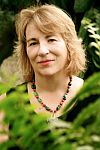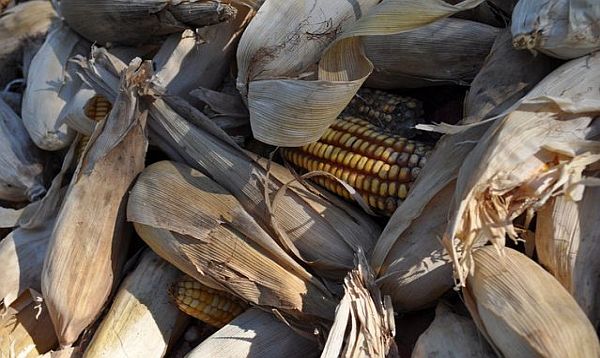Puerto Vallarta, Mexico - I first learned about the use of foods and plants for healing when I lived in the jungle where there were no doctors. I relied on the women of the village to help me navigate the numerous subtropical diseases I encountered, along with the accidents, bites, and the many maladies no one could name.
My apprenticeship with the women in the village began very naturally. I learned from trial and error and I served as my own laboratory. It was only later as I sat with my grandmother as she entered her ninth decade that I learned that I came from a long line of Dacian Jewish women who used their hands for healing.
These women healed with herbs, foods, and glass cups or wine glasses, to which a little alcohol was added and ignited and then placed flush against their patient's skin. The combustion of the alcohol and evacuation of the oxygen produced a vacuum that would pull up on the skin, creating a suction, which in turn brought blood and oxygen to the surface, dispersing the pain and stagnation in the tissue. This was believed to rid the body of poisons.
The Yiddish saying: Es vet helfen vi a toiten bahnkes (It will help like applying cups to a dead person) (Seicol, 1997), points to the centrality and importance of cupping in the healing repertoire of 19th century eastern European Jewish women. "Cupping" is also widely practiced throughout the Middle East, Europe, and by indigenous peoples of the Americas who used a variety of animal horns like buffalo in the old days.
Cupping was widely practiced by illustrious Boston physicians through the mid-19th century and it remains an integral method of traditional Chinese medicine, practiced by acupuncturists and massage therapists today. My great-grandmother brought these traditions with her, along with her borscht, brisket, and the bris (ritual male circumcision) when she left the old world, but as she and her neighbors settled into their new lives in Boston, cupping and herbs went into the cupboards and they now took their troubles to the mein tsores (my troubles) hospital (the Massachusetts General Hospital), where the new medicine was now concerned more with the inside of the body and how chemistry could cure.
Like most immigrants, their diets changed in the new culture along with their physical activity and diseases, setting the stage for intergenerational epigenetic changes that we continue to see among all immigrants (and native peoples) today.
While I learned traditional healing and herbal medicine in the indigenous village in Mexico, I also observed over a period of 30 years changes in health and food practices due to what I call Nutrition Trauma (Korn & R˙ser, 2006).
Nutrition Trauma is defined as the disruption in access to endemic, natural food resources due to overwhelming forces that make inaccessible foods that are bio-culturally and bio-chemically suited to healthy digestion and nutrient utilization. Nutrition Trauma occurs when introduced foods overwhelm the capacity of the local (indigenous) peoples to digest and metabolize these new foods, which often cause conditions that were unknown or rare before the colonial process.
While this definition evolved in response to my work with indigenous populations, nutrition trauma is applicable to all people whether by choice, addiction, or conditions that overwhelm their capacity to digest, thus resulting in chronic illness.
Why is this concept relevant to west Mexico, nutrition and traumatic stress? My answer is: food is either medicine or it is poison, and people who experience stress and trauma require food that is medicine; food that is poison exacerbates the effects of trauma on the mind and body.
One of the approaches to consider to counteract nutrition trauma is to restore the use of traditional, authentic whole foods that have been used for hundreds and even thousands of years by your ancestors.
In subsequent posts I will explore in more depth foods that are medicine and foods that are poison to mental and physical well being.
References:
Korn, L., & R˙ser, R. (2006). Burying the umbilicus: Nutrition trauma, diabetes and traditional medicine in rural West Mexico. In G. C. Lang (Ed.), Indigenous peoples and diabetes: Community empowerment and wellness (pp. 231-277). Durham, NC: Carolina Academic Press.
Seicol, N. H. (1997). The consequences of cupping [Correspondence]. New England Journal of Medicine, 336, 1109-1110. Retrieved from nejm.org.
 Dr. Leslie Korn has a clinical practice specializing in integrative mind/body medicine. She completed her training at Harvard Medical School. She directed a natural medicine health clinic in Cabo Corrientes for over 25 years and currently lives in Puerto Vallarta. She conducts research on culture, ethnobotany and culinary traditions of the west coast of Mexico, and is the author of 5 books including Nutrition Essentials for Mental Health and the forthcoming, The Good Mood Kitchen. To learn more about her work, visit DrLeslieKorn.com, and healthalt.org. She can be reached at lekorn(at)cwis.org.
Dr. Leslie Korn has a clinical practice specializing in integrative mind/body medicine. She completed her training at Harvard Medical School. She directed a natural medicine health clinic in Cabo Corrientes for over 25 years and currently lives in Puerto Vallarta. She conducts research on culture, ethnobotany and culinary traditions of the west coast of Mexico, and is the author of 5 books including Nutrition Essentials for Mental Health and the forthcoming, The Good Mood Kitchen. To learn more about her work, visit DrLeslieKorn.com, and healthalt.org. She can be reached at lekorn(at)cwis.org.Click HERE to read more articles by Leslie Korn.



